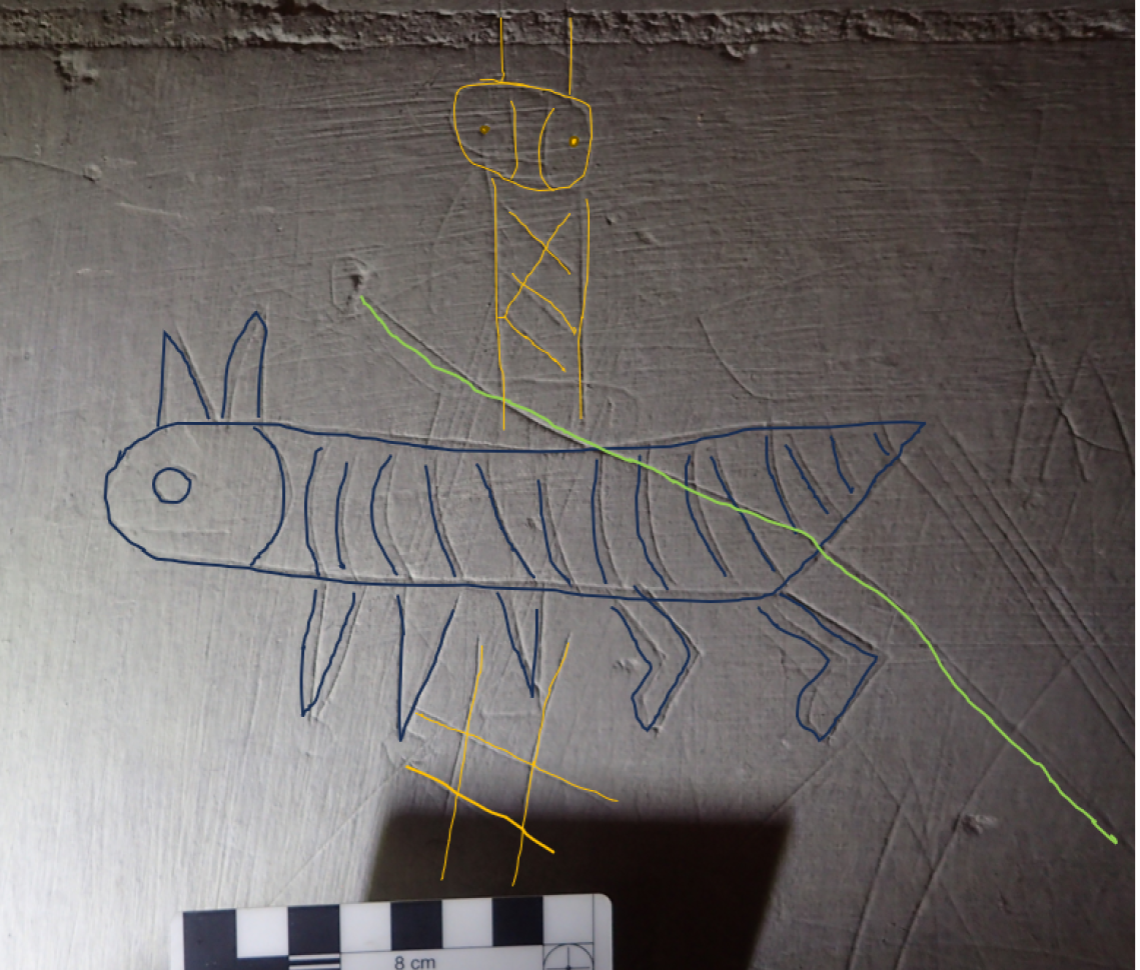Timothy Easton: Buildings archaeologist & historian
This is the second post which explores the work of researchers in the field who, undertaking surveys in the disciplines of documentary research or buildings archaeology have contributed, in some way, to the paradigm shift that has occurred in the study area of ritual protection marks & ritual practices over the last twenty years.
Their work has enabled the new interpretative frameworks to become established through robust scientific testing of the empirical data. Their discoveries have often sprung from the first rule of archaeology; to see the unusual in the usual. The new interpretative frameworks, when applied to the newly- recognised phenomena, have opened up new lines of enquiry and helped to shed light on the motives behind these practices.
The images above are culled from two of Easton’s works; the first from his ground-breaking 1988 article, ‘Apotropaic Marks Scribed & Scratched in Barns & Houses’ (re-appraised in his 1999, ‘Ritual Marks on historic Timber’) and a study of the magnificent Laxfield door (from a later 2005 article), which displays multiple compass-drawn designs. The latter was one of the star exhibits at the Spellbound exhibition at the Ashmolean Museum, Oxford in 2018.
Broadly speaking, the former article initiated much our current interest in apotropaics. Indeed, a substantial part of Easton’s work had its foundations in the discoveries of his predecessor (and mentor) Ralph Merrifield who had crystalised many of the arguments for ritual acts in his ‘The Archaeology of Ritual & Magic’ in 1987 (see previous post). However, Easton was also responsible for the first reports which detailed both ritually-applied taper burn marks and the phenomenon of so-called ‘Spiritual Middens’ which are deposits of worn clothes and objects intentionally concealed within the voids within a building’s fabric (such as under the floor boards).
Subsequently, his work has informed more recent studies into medieval graffiti by such luminaries as Matthew Champion (see separate article later on RPM). Most importantly, Easton’s articles are brimming with inventive and stimulating ideas providing many new avenues for research. He seems to have an uncanny intuition and an ability to make intellectual leaps of faith – the kind required to move on academic enquiry when it becomes mired in petty squabbling.
Even though recent analyses of single letters and initials in ecclesiastical contexts have reduced the number of genuine examples of the conjoined ‘VV’ motif (identified as a Marian Mark in its ‘W’ or ‘M’ forms and believed to represent a cipher for the Virgin Mary by Easton Virgo Viginum = ‘Virgin of Virgins’) many of these marks still stand as having an apotropaic function. Additionally, recent studies which have identified Baltic Timber Marks on wooden building components have not been able to account for all of the ‘W’ and ‘M’ marks, nor completely undermined all of his interpretations. For some, this author included, the power of the Marian Mark as an apotropaic has remained undiminished when it can be shown to have been deployed around the thresholds of buildings both secular and religious.
First and foremost, Easton understands the craftsman, their techniques (and the use of different tools) and is both an outstanding photographer and draughtsman. His articles are always a joy to read even to the uninitiated.
A good place to start would be ‘Ritual Marks on Historic Timber’ (1999) and the Academia site holds many of his articles – all free to download as PDF’s –
https://www.academia.edu/13353254/RITUAL_MARKS_ON_HISTORIC_TIMBER_SPRING_1999

